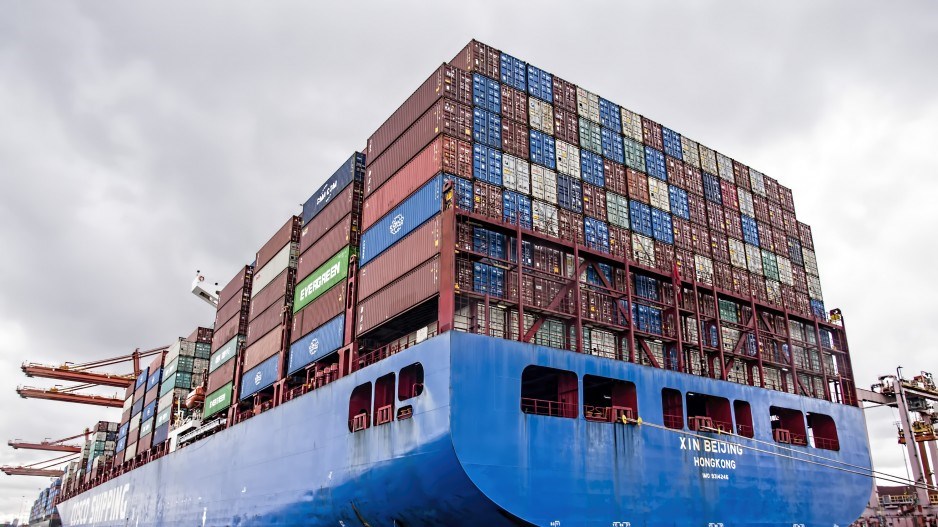When Canada released its Indo-Pacific Strategy in the fall of 2022, India was front and centre. The country was a “critical partner” in Canada’s plans to expand trade and investment throughout the populous and fast-growing region, and it was seen as an economic and military counterweight to an increasingly antagonistic China.
Two years on, that strategy is in disarray.
Diplomatic relations deteriorated in September, 2023, when Prime Minister Justin Trudeau accused Indian agents of aiding in the killing of Hardeep Singh Nijjar, a Canadian citizen and Sikh separatist, in Surrey, B.C. The row has intensified in recent days with new allegations from the RCMP against Indian officials and the expulsion of top diplomats by both countries.
The sudden cratering of Canada-India relations has clouded Ottawa’s vision for diversifying trade in Asia, and comes at a perilous moment for Canadian trade policy more broadly.
Canada’s already fraught relationship with China took a turn for the worse after Ottawa said in August it would impose tariffs on Chinese electric vehicles, steel and aluminum, and Beijing responded with an anti-dumping investigation against Canadian canola products.
What Canada’s diplomatic row with India means for an already underperforming trade relationship
Meanwhile, the crucial relationship with the United States is entering a rocky period with the possible election of Donald Trump, a trade skeptic, as president in November and the potential renegotiation of the United States-Mexico-Canada Agreement (USMCA) in 2026 amid rising protectionism among both Republicans and Democrats.
“There’s never a good time to be getting into a trade dispute, especially with a big country like India. But of course we’re living through a very fraught geopolitical environment and time,” said Vina Nadjibulla, vice-president of research and strategy at the Asia Pacific Foundation of Canada.
Despite growing engagement between Canada and India’s business communities over the past two decades, actual trade between the two countries remains relatively small. Two-way merchandise trade was $12.7-billion in 2023, compared with $119.8-billion with China or $36.5-billion with Japan.
That said, India is a significant market for several Canadian commodities, including lentils, fertilizer and coal. And it’s becoming an important destination for Canadian foreign direct investment, as companies and institutional investors shift their focus away from China. Over the past five years, around a quarter of Canadian pension-fund investments in Asia went to India, up from 10 per cent between 2003 and 2018, according to the Asia Pacific Foundation.
India is also a major regional player that holds the keys to economic clubs that Canada might want to join.
“If you think about India’s sway in the region, it’s not only a founding member of military institutions like the Quad and economic institutions like the Indo-Pacific Economic Framework, but it’s also a critical U.S. ally,” said Xavier Delgado, senior program associate at the Wilson Center, a Washington think tank.
“So this not only puts Canada in a bind, but it puts those who are looking to advocate for a greater Canadian presence in the region in a bit of a bind as well.”
Business groups are hoping that the political fracas does not escalate into an commercial one. Canada’s International Trade Minister Mary Ng tried to offer reassurance on Monday, saying in a statement that “the government remains fully committed to supporting the well-established commercial ties between Canada and India.”
The two countries halted negotiations last year for a free-trade agreement, and India briefly stopped processing business and travel visas. So far, however, the diplomatic crisis hasn’t shown up in the economic data.
Canadian exports to India grew by 1.6 per cent between October, 2023, and August, 2024 – the period of heightened tensions – compared with the same period the previous year. Indian lentil imports from Canada doubled last year.
“That gives us some optimism for the way forward again,” said Stuart Bergman, chief economist at Export Development Canada.
“But certainly a deterioration in commercial relations can’t be ruled out completely,” he said, noting “a sort of nationalist sentiment in India that makes any foreign companies sort of susceptible to regulatory bottlenecks.”
Victor Thomas, president and chief executive officer of the Canada-India Business Council, said that Canadian companies that were already doing business in India have largely carried on without disruption. But firms that aren’t already in the market are taking a wait-and-see approach.
“A lot of those firms on both sides have pulled back and are just saying, let things settle,” Mr. Thomas said.
While political forces on both sides could lead to a more serious breakdown in the bilateral economic relationship, there are also powerful incentives to prevent things from spiralling, said Eric Miller, president of Rideau Potomac Strategy Group, a Washington-based consultancy that advises governments and companies on trade issues.
A rapidly urbanizing India needs outside investment to fund infrastructure building and to compete with China and other Southeast Asian countries as a manufacturing destination. A major blow-up with Canada could sour other foreign investors on the country.
For Canada, India presents an attractive and rapidly growing market as the world fragments into competing trade blocs, with China on one side and the U.S. on the other.
“I think fundamentally the rationale of Canada not wanting to undermine deeper ties and India wanting to continue growth will prevail in this particular case,” Mr. Miller said.
“But the more that this goes on, the more you start to get questions around the market and whether there’s a drag.”



